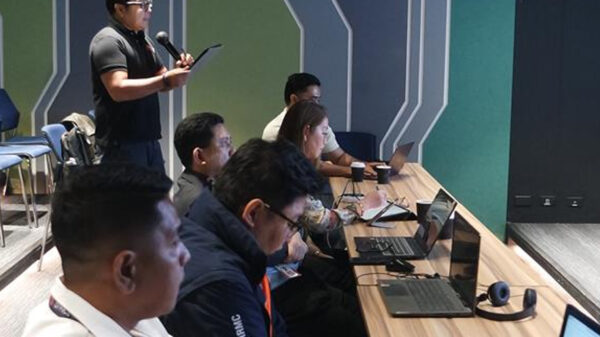Telecoms and multimedia service provider PLDT is gearing for higher Philippine ranking in the global Digital Evolution Index (DEI) as it accelerates efforts to enable the country’s digital economy through expanded internet access, continuous innovation, and increased digital adoption.
Created by US-based Fletcher School at Tufts University using data from 2008 to 2013, the DEI ranked the Philippines on the verge of the high-potential or “break-out” category and noted as one of the “rapidly-advancing countries” alongside China, Malaysia, Thailand, and Vietnam in the global digital topography.
“But the next phase of growth is harder to achieve,” the study said. “Staying on this trajectory means confronting challenges like improving supply infrastructure and nurturing sophisticated domestic consumers.”
PLDT Chairman Manuel Pangilinan said that the PLDT Group is well-positioned to support the country in meeting these challenges and sustain its rapid digital transformation through its 76.4 million subscribers nationwide.
“We have been taking significant steps in the past decade to ensure that we are ready and prepared for the digital future. We are, however, accelerating our digital initiatives as this future will require engaging our customers from a different set of lenses, as both individuals and enterprises embrace a digital life,” he said.
He noted that on the enterprise side, PLDT is looking at data center infrastructure, big data, machine-to-machine (M2M) solutions and cloud as digital enablers while for the individual, the drivers will be digital commerce, mobile money, and entertainment.
The PLDT Group spent over P300 billion over the last ten years, an average of P30 billion per year in improving and expanding both its fixed and wireless networks and infrastructure. It has also aggressively expanded its data center capacity to reach 6,700 racks by yearend, the biggest in the country.
PLDT has also invested in ventures that would transform its local verticals into global horizontals such as its investment in Rocket Internet. This partnership has already produced a joint venture that aims to drive the massive adoption of online and mobile payment solutions in emerging markets.
On the other hand, the Group is also developing its own applications and initiatives such as the LockByMobile which is a mobile-based, anti-fraud security service that will empower card users to “lock” and “unlock” their ATM, prepaid, debit and credit cards with the use of their smartphones.
PLDT is also making a strong push for greater internet access. Its mobile subsidiary Smart Communications recently partnered with Facebook to debut Internet.org in Southeast Asia. This enabled Smart’s over 70 million wireless subscribers to enjoy free access to select web services.
The PLDT Group is also enriching its multimedia content through partnerships with various providers like Disney. It recently expanded its multi-year, multi-platform partnership with The Walt Disney Company Southeast Asia, through its digital entertainment arm Disney Interactive. After initially providing access to Disney’s popular online games and e-books to Smart, the Disney Interactive portfolio will now be offered at home through PLDT’s home digital services unit PLDT HOME.
The Digital Evolution Index or DEI was created by the Fletcher School at Tufts University with support from Mastercard and DataCash to compare the readiness for a digital economy of 50 countries which were selected based on the location’s internet usage.
The index was derived from four broad drivers: 1. supply-side factors including access, fulfillment, and transactions infrastructure; 2. Demand-side factors including consumer behaviors and trends, financial and internet and social media savviness; 3. Innovations including the entrepreneurial, technological and funding ecosystems, presence and extent of disruptive forces and the presence of a start-up culture and mindset; and 4. Institutions including government effectiveness and its role in business, laws and regulations and promoting the digital ecosystem.
Based on the performance of countries on the index from 2008 to 2013, they were assigned to four trajectory zones:
· Stand Out – showed high levels of digital development in the past and continue to remain on an upward trajectory
· Stall Out – achieved a high level of evolution in the past but are losing momentum and risk falling behind
· Break Out – have the potential to develop strong digital economies and though overall score is still low, they are moving upward and are poised to become Stand Out countries in the future
· Watch Out – facing significant opportunities and challenges, with low scores on both current level and upward motion of their DEI





















































































































